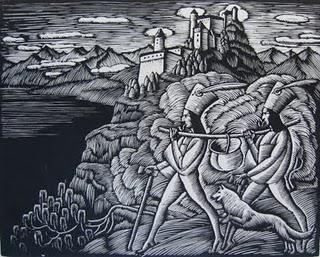 Wladislaw Skoczylas, Brigands pour un trésorWood engraving, black-and-white state, 1924
Wladislaw Skoczylas, Brigands pour un trésorWood engraving, black-and-white state, 1924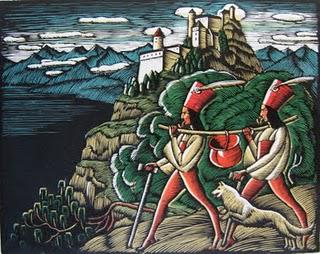 Wladislaw Skoczylas, Brigands pour un trésorWood engraving, coloured state, 1924
Wladislaw Skoczylas, Brigands pour un trésorWood engraving, coloured state, 1924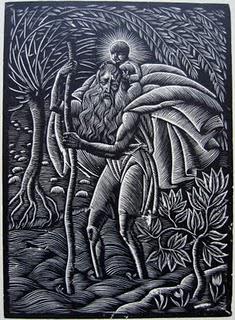 Wladislaw Skoczylas, Saint-ChristopheWood engraving, 1929
Wladislaw Skoczylas, Saint-ChristopheWood engraving, 1929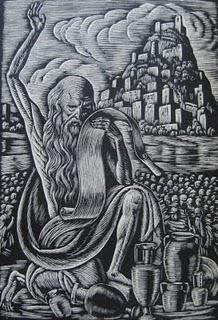 Wladislaw Skoczylas, BaruchWood engraving, 1929
Wladislaw Skoczylas, BaruchWood engraving, 1929Bogna Krasnodebska-Gardowska (1900-1986) was certainly a pupil of Skoczylas. She specialised in religious subjects.
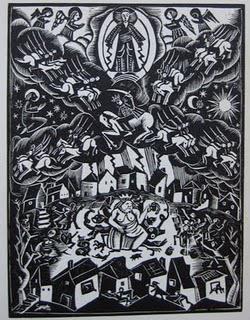 Bogna Krasnodebska-Gardowska, L'ApocalypseWood engraving, 1929
Bogna Krasnodebska-Gardowska, L'ApocalypseWood engraving, 1929My sole engraving by Stefan Mrozewski (1894-1975) is also a religious subject (the entombment of Christ); Mrozewski's most important work is considered his series of 101 large engravings for Dante's Divine Comedy, on which he laboured for 32 years. Stefan Mrozewski was born in Czestochowa, Poland, in 1894. Although he showed early talent as an artist, his modest family circumstances initially prevented him from studying art. In 1920 he served in a cartographic unit in the Polish-Soviet war. Afterwards, he attended several art schools, notably studying wood engraving and etching under Wladislaw Skoczylas at the Applied Art School in Warsaw. From 1925-32 Stefan Mrozewski lived in Paris, where he exhibited at various Salons and at the Galerie Bonaparte. His reputation in Paris was such that Pierre Mornand devoted a chapter to his work in Vingt-deux artistes du livre. From 1933-35 Mrozewski lived in Amsterdam, and from 1935-37 in London. He returned to Poland only to find his homeland invaded by the Nazis; Stefan Mrozewski was active in the Polish Resistance, putting his graphic skills to good use. After Poland was swallowed up by the Soviet Union in 1945, Mrozewski made his escape, first to familiar France and Holland, and then in 1951 to the USA, where he lived and worked until his death in Walnut Creek, California, in 1975.
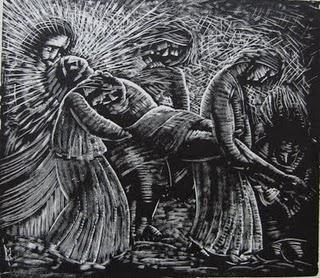 Stefan Mrozewski, Mise au tombeauWood engraving, 1929
Stefan Mrozewski, Mise au tombeauWood engraving, 1929Edmund Ludwik Bartlomiejczyk (1895-1950) was more of a contemporary of Skoczylas than a student, and in fact Bartlomiejczyk also had a considerable influence on wood engraving in Poland, in his role as a professor at the Warsaw Academy of Fine Arts. Like Skoczylas, he took inspiration from Polish folk art, as in this fine engraving of a peasant playing the bagpipes.
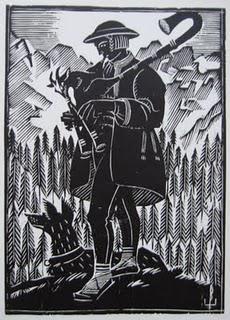 Edmund Bartlomiejczk, Le joueur de cornemuseWood engraving, 1929
Edmund Bartlomiejczk, Le joueur de cornemuseWood engraving, 1929The same folk art influence can be seen in the work of Zygmunt Kaminski, who drew particularly on the Polish paper-cut tradition. Kaminski (1888-1969) illustrated the novel Chlopi by Wladyslaw Reymont with original woodcuts in this folk art style. He lived and worked in Warsaw. In 1921 Zygmunt Kaminski exhibited at the Exposition des Artistes Polonais organised by the Salon de la Société Nationale des Beaux-Arts in Paris.
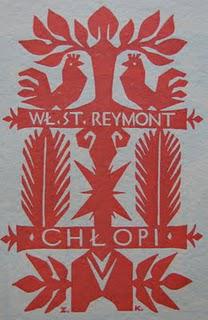 Zygmunt Kaminski, ChlopiWood engraving, 1931
Zygmunt Kaminski, ChlopiWood engraving, 1931The painter, sculptor, stage director, and printmaker Zbigniew Pronaszko (1885-1958) was born in Zychlin; his younger brother Andrzei Pronaszko was also a significant Polish artist. Zbigniew Pronaszko studied in Krakow under J. Melczevski, and also in Munich. In 1928 he exhibited four canvases in the Polish section of the Salon d'Automne in Paris, bringing his art into the international arena.
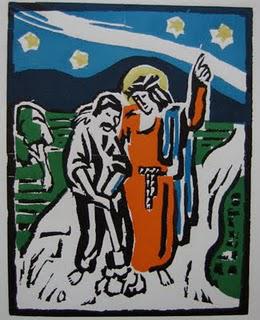 Zbigniew Pronaszko, Illustration for 10 Ballad O Powsinogach BeskidzkichWood engraving, 1931
Zbigniew Pronaszko, Illustration for 10 Ballad O Powsinogach BeskidzkichWood engraving, 1931Although many of the artists discussed so far drew on folk art, they did so from an educated perspective. My last Polish wood engraver was a true outsider artist. The sculptor and printmaker Jedrzej Wowro (sometimes spelled Vowro) was born in Gorzeniu Dolnym in 1864. Jerdzej Wowro was an entirely self-taught folk artist. Born into a humble farming family, he remained illiterate. Jedrzej Wowro worked in coal mines, mills, and as a lumberjack. It was after being buried in a mine collapse that he returned to Gorzeniu and married Mary Guzek, who was literate, and who introduced him to stories of the saints who appear in much of his work. In 1923 his second wife Marianna Pin took some of his sculptures to the local manor house and showed them to the writer and champion of expressionism Emil Zegadlowicz. From that moment, Zegadlowicz became Jedrzej Wowro's patron, encouraging others to buy his work, and commissioning 20 woodcuts between 1925 and 1933. After that Wowro, now internationally known, was too ill to work. He died at the age of 73 in 1937.
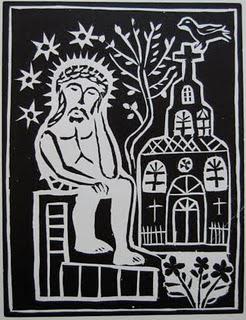 Jerdzej Wowro, Ballada O SwiatkarzuWood engraving, 1931
Jerdzej Wowro, Ballada O SwiatkarzuWood engraving, 1931



COMMENTS ( 1 )
posted on 15 September at 11:09
Our company GRAVIDEJA uses modern laser engraving technology and is engaged in the engraving, deep engraving, marking and cutting lasers. Laser can engrave on almost all surfaces, all metals, including copper (which characteristics make difficult engrave), plastic, glass, wood, stone, rubber, paper, amber, some foods (nuts, orange, watermelon, chocolate, etc.).. Link: http://www.gravideja.lt/graviravimas/graviravimo-lazeriu-galerija/lazerinis-graviravimas/